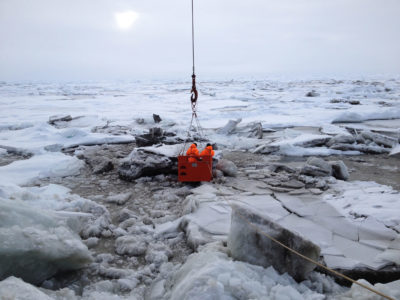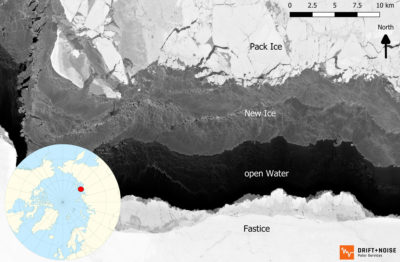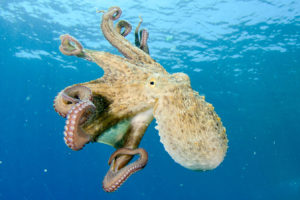Scientists test the age of sea ice off the northern coast of Russia. Alfred-Wegener-Institut / Ruediger Stein
The northern coast of Russia is largely considered the most important spot for the formation of new sea ice in the Arctic Ocean, fueled by the area’s shallow waters, frigid winter temperatures, and a strong wind that pushes ice to the open sea. But scientists have discovered that 80 percent of this new sea ice now melts before it can leave coastal waters — up from 50 percent in 2000.
The melting is being driven by the region’s rapid warming, according to the new research published this week in the journal Scientific Reports. Temperatures in the Arctic have risen twice as fast as the rest of the planet.
With just 20 percent of new Russian sea ice making its way to the central Arctic Ocean, the region is losing an important means of transporting nutrients, algae, and sediment, the scientists note. And without new sea ice to replenish the region’s more stable, older ice, “the world is one major step closer to a sea-ice-free summer in the Arctic,” warned Thomas Krumpen, a sea-ice physicist at the Alfred Wegener Institute in Germany and lead author of the new study.
“The ice now leaving the Arctic through the Fram Strait is, on average, 30 percent thinner than it was 15 years ago,” he said. “The reasons: On the one hand, rising winter temperatures in the Arctic and a melting season that now begins much earlier; on the other, this ice is no longer formed in the shelf seas, but much farther north. As a result, it has far less time to drift through the Arctic and grow into thicker pack ice.”




